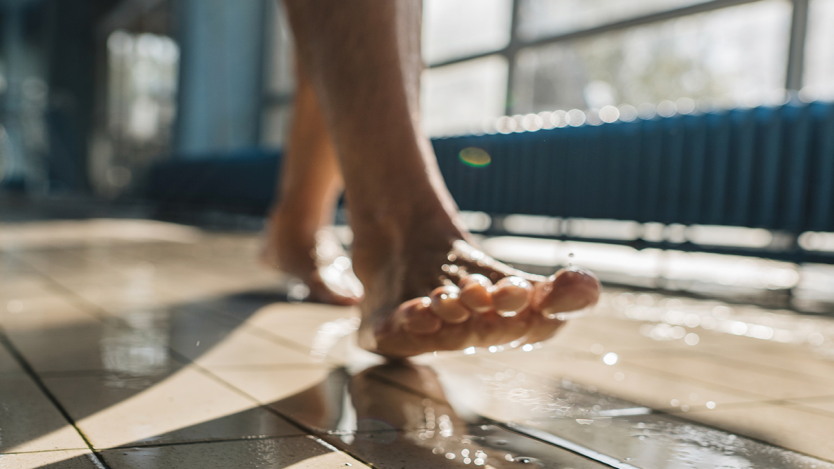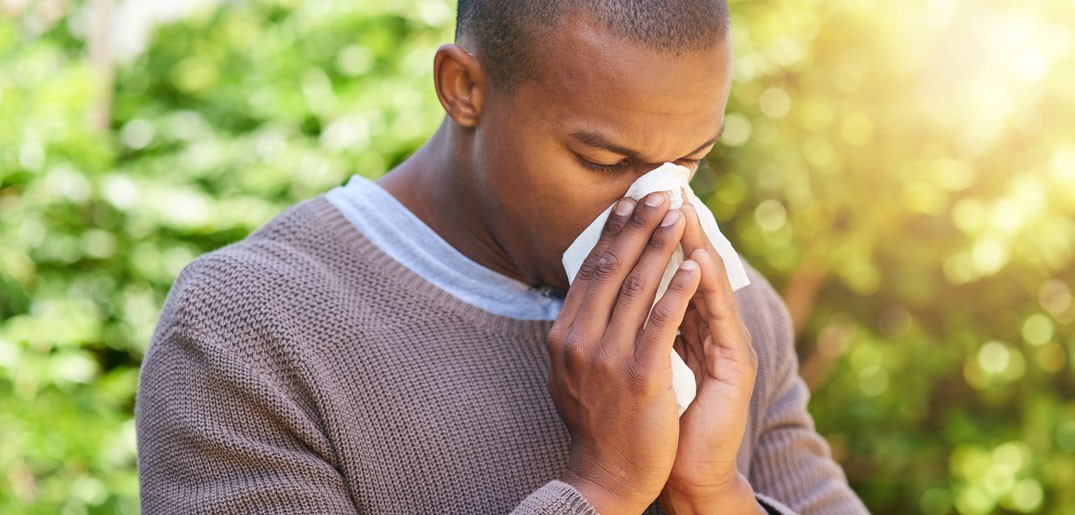In OTC Category Reviews
Follow month by month updates on topics including asthma, mental health and skin conditions and be able to provide informed advice to customers at the counter.Bookmark
There are big hopes for spring and summer 2021 as lockdown continues to ease. Pharmacy teams can ensure hayfever sufferers don’t miss out on the fun with management advice and support
Hearing someone coughing can be a great cause of concern these days because it’s a known symptom of Covid-19 infection. Consequently, as the world starts to open up again, it can be extremely frustrating for people with symptoms of hayfever to receive worried glances as they cough or sneeze. But as the pollen count starts to ramp up, so do these symptoms.
To help put everyone at ease this hayfever season, it’s time to take action and help customers put a management plan in place. There are many different treatment options available for customers to tackle hayfever, as well as some top tips and lifestyle advice that pharmacy teams can share.
Feeling the effects
Hayfever is an extremely common allergic reaction thought to affect up to one in five people at some point in their lives. There are thought to be around 13 million people with hayfever in the UK.
“Hayfever, or seasonal allergic rhinitis, is an allergy caused by inhaling plant pollens and can cause inflammation of the lining of the nose, throat and eyes. It can trigger symptoms including sneezing, itchy and clear watery discharge from the nose and itchy red watery eyes,” explains Margaret Kelman, specialist allergy nurse at the charity Allergy UK. “Seasonal allergic rhinitis is caused by airborne, or wind, pollinated allergens from grasses, trees, weeds, plants and outdoor moulds. Bright flowers, whose pollination is by insects, are less likely to cause allergy.”
Some other common symptoms can include an itchy throat, blocked nose, blocked sinuses, headaches, shortness of breath, tiredness and post-nasal drip – a feeling of mucus dripping down the back of the throat. For some hayfever sufferers, symptoms can be quite severe, with up to 57 per cent of adults and 88 per cent of children suffering with sleep problems as a result of their symptoms, according to Allergy UK.
Hayfever can affect anyone at any age, but it is thought that many people’s symptoms improve as they get older, with the NHS estimating that symptoms disappear completely in around 10-20 per cent of hayfever sufferers.
The condition is closely linked to other allergies and conditions, such as asthma and eczema, and is thought to have a genetic cause for some people. “Having allergies as a parent does not necessarily mean your child will also have allergies – it is an indication that there is an increased likelihood of developing allergies,” Margaret says. “There are many other environmental influences alongside genetics and family history that shape who will go on to develop an allergy.”
Taking control
There is currently no cure for hayfever, but there are a variety of treatment options available to customers to help manage symptoms. Margaret suggests that hayfever sufferers keep their treatment near something they use every morning, like their toothbrush, so they remember to take it.
- Antihistamines
These are often considered to be the first-line treatment for hayfever as they tend to start working quite quickly and help to relieve most symptoms. They treat hayfever by blocking the action of histamine, which is released by the body when it thinks it is being attacked by an allergen, such as pollen.
Available in several forms, including tablets and syrups – the latter being particularly useful for children and those unable to swallow tablets – antihistamines can be taken on a daily basis before and during the hayfever season, or as and when sufferers notice symptoms. Non-sedating varieties (e.g. acrivastine, cetirizine, loratadine) may be preferred during the day, while sedating antihistamines (e.g. those containing chlorphenamine) may be suitable for people experiencing sleep problems as a result of their symptoms.
- Nasal sprays
There are several different types of nasal sprays available to treat hayfever symptoms:
- Corticosteroid nasal sprays are often the first choice of treatment for people who experience regular allergy symptoms over a long period of time. These work to reduce the swelling in the nose and are effective against all hayfever symptoms. “Nasal steroid spray helps to reduce swelling and inflammation and reduce symptoms like sneezing, itching and a runny nose,” explains Margaret. “It is important that they are used correctly to ensure that the maximum benefit of the medication is gained.” For best results, they should be started a couple of weeks before the hayfever season starts so that the medication is built up in the bloodstream and can start working as soon as possible. The spray should then be used on a daily basis. However, it is still worth starting to use a steroid nasal spray even if symptoms are already present
- Decongestant nasal sprays are used to help reduce the swelling of blood vessels in the nose and treat the effects of a blocked nose. These are for short-term relief only and should not be used for more than a week as long-term use can cause rebound congestion and make symptoms worse. Some customers may suffer from nose bleeds after using nasal sprays and may need an alternative form of treatment
- Saline nasal sprays are a non-medicated option and can help to soothe inflammation in the nose. In addition, non-medicated nasal allergen barrier balms can prevent pollen or other allergens entering the nasal passages.
Signposting suggestion: British Society for Allergy & Clinical Immunology Nurses Guide to correctly using a nasal spray.
- Eye drops
These can directly treat red, watery or itchy eyes and can also help to manage symptoms of allergic conjunctivitis resulting from pollen exposure. Eye drops containing sodium cromoglicate are available over the counter. This active ingredient is a mast cell stabiliser, which prevents the body’s mast cells from releasing histamine, therefore stopping allergic eye symptoms.
Whatever the symptoms experienced and treatments used, Margaret explains that “if a patient’s hayfever medication is not helping to improve their symptoms, consider if they are taking their medication correctly and regularly”.
‘Tis the season
Another way for customers to stay on top of their hayfever is to be aware of the different pollen seasons, including which one or ones affect them most, and keep an eye on the daily pollen count, just like they would the weather forecast.
“The two main types of pollen which affect the majority of people with hayfever are tree pollens – with birch pollen being the most common known tree pollen allergen – and grass pollen. Grass pollen is the trigger in 80 per cent of people with hayfever,” explains Margaret.
Although certain people may experience winter hayfever, the months of March to September are thought to be when people with hayfever suffer the most.
There are lots of factors that affect the pollen seasons, including where people live in the UK, according to the Met Office. For example, in the north of the country there is a shorter pollen season that starts later on, and there is also thought to be slightly less pollen circulating here. The countryside has higher rates of pollen compared to built-up areas, and the coast is thought to have less pollen than places inland. Equally, hot weather reduces the pollen count, as does dry weather.
“The most effective way to control hayfever symptoms would be to avoid pollen,” says Margaret. “However, this is not practical or easy. Pollen avoidance is difficult, especially during the spring and summer months when the weather improves, and people spend increasing amounts of time outside.”
Margaret therefore suggests the following advice for pharmacy teams to pass onto customers:
- Remain indoors, when possible, during pollen seasons, particularly on warm weather and windy days
- Avoid outdoor activities that can cause exposure to pollen, such as cutting the grass
- Wash the face and blow the nose when entering the house, especially when the pollen is high
- Take a shower after outdoor activities where exposure to pollen is high
- Keep windows closed at home and in the car
- Wear large or wraparound sunglasses and a hat
- Apply balm or emollient around eyes and inside of nose
- Dry washing inside or in a tumble dryer as pollen can be brought inside by clothes hung outside to dry.
Covid-19 concerns
Although lockdown is lifting, Covid-19 infection is still a reality, which means this summer it is more important than ever for hayfever sufferers to manage their symptoms as best they can, especially coughing and sneezing, in case they have the virus and are asymptomatic. “We now understand that Covid-19 is an airborne virus, and so reducing the risk that someone infected with Covid-19 coughs and sneezes can reduce the risk of transmission,” says Professor Claire Hopkins, president of the British Rhinological Society.
It is important for pharmacy teams to be able to distinguish between the symptoms of Covid-19 and hayfever to help put customers’ worries to rest, especially for first-time hayfever sufferers. Although some symptoms are similar, there are some key differences.
“Generally, patients with Covid-19 have very mild nasal symptoms except for a severe loss of smell – congestion and sneezing are not common features, while severe loss of smell is uncommon in allergic rhinitis,” says Professor Hopkins. “Anyone with sudden-onset loss of smell should isolate and seek testing even if they have a history of allergic rhinitis. Muscles aches, fatigue, tummy upset and a fever all point to Covid-19. Itching suggests allergy, although some patients with Covid-19 report a tingling feeling or burning in their nose. If in doubt, be safe and get tested.”
In addition, the mandatory requirement (at the time of writing) to wear a face covering or mask in some public spaces could actually have some benefits for hayfever sufferers. “There is some anecdotal evidence to suggest that the wearing of masks during the spring and summer of 2020 helped reduce hayfever symptoms for some individuals, possibly due to the mask acting as a barrier to inhaled pollen allergens,” says Margaret.
Take a breath
Hayfever is more common for people with a family history of asthma, allergies and eczema. In fact, over 80 per cent of asthmatics have hayfever and 10-40 per cent of patients with hayfever have asthma, according to the World Allergy Organization.
The poor management of hayfever symptoms can lead to issues with asthma so it’s important that symptoms are controlled to prevent asthma attacks year-round. “Some people find that hayfever can trigger their asthma symptoms. As well as the usual hayfever symptoms of a runny or blocked nose, sneezing, coughing, and itchy or watery eyes, people with asthma can also notice that they are short of breath, have a tight chest or wheeze,” says Jessica Kirby, head of health advice at Asthma UK. “This could lead to an asthma attack, which is why it’s vital that people with asthma and hayfever know what their pollen triggers are, when in the year they occur and what they can do to stop hayfever triggering an asthma attack.”
To reduce the risk of hayfever triggering an asthma attack, Asthma UK has three top tips that pharmacy teams can pass onto customers:
- Carry a reliever inhaler every day. These quickly relax the muscles in the airways and ease symptoms on the spot
- Take a preventer inhaler as prescribed. This reduces sensitivity and swelling in the airways, helping to stop wheezing and coughing before they start
- Blitz hayfever symptoms with the right hayfever treatment. Options include antihistamines, steroid nasal sprays and eye drops, depending on the individual’s needs and preferences.
“It’s also important for people to buy and start taking their hayfever medicines in advance of their pollen trigger being released,” Jessica adds. “If someone regularly gets hayfever and takes antihistamines, they should start taking them up to four weeks before they normally get symptoms. Starting them early means that when pollen starts being released, the medication has already built up in their bloodstream, so they may be less likely to react.”
Sponsored
 Sponsored education
Sponsored education
A different approach to pain
Complete this interactive video to rethink your pain recommendations and ensure you offer every customer the most appropriate advice
 Sponsored education
Sponsored education
Challenge your thinking on warts and verrucas
Discover different treatment options for warts and verruas and when to recommend them to your customers, based on their individual needs


Record my learning outcomes